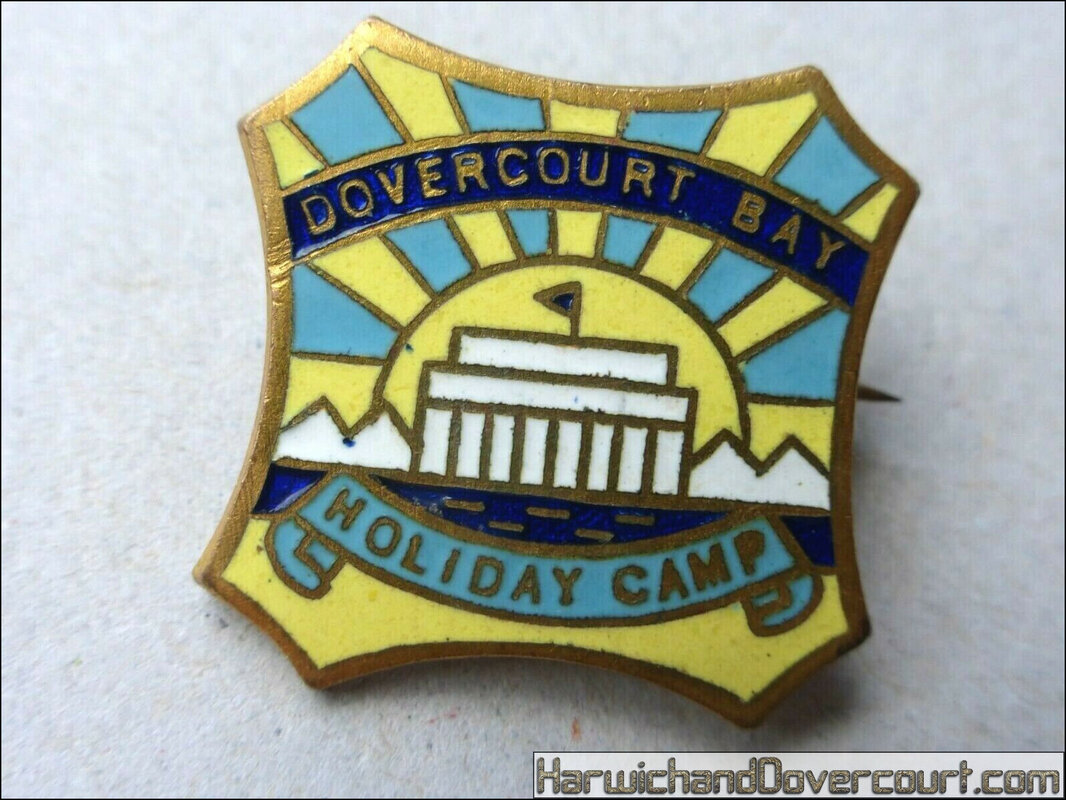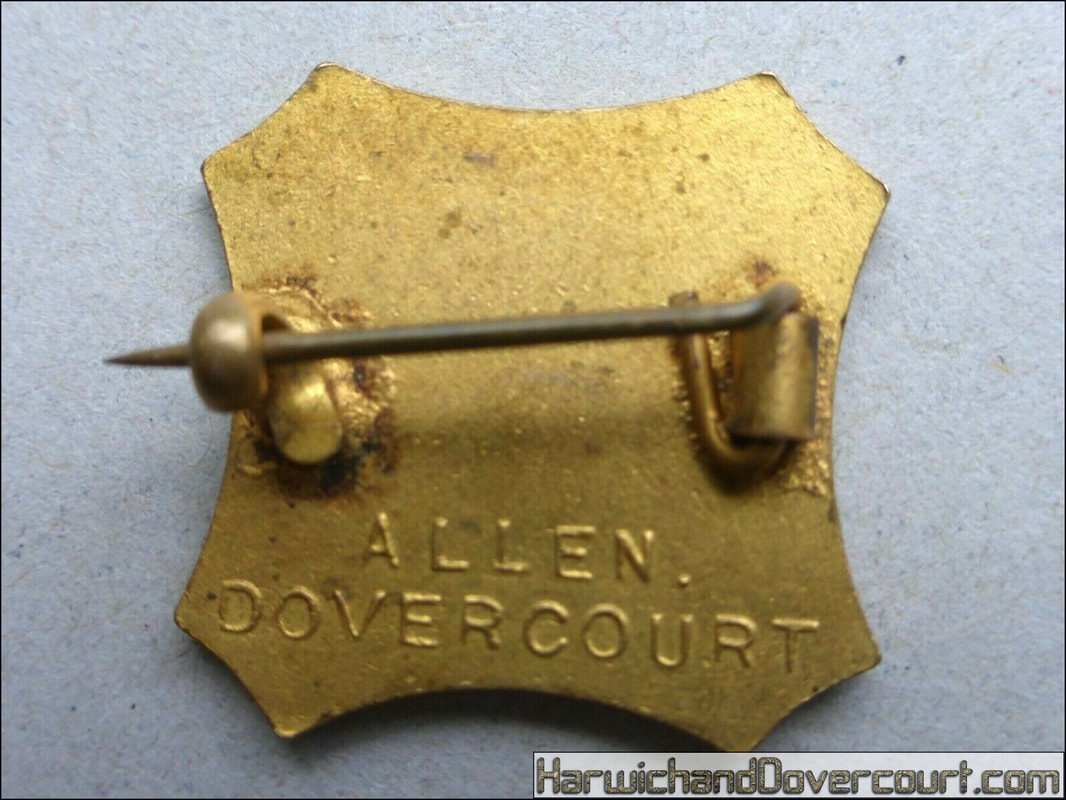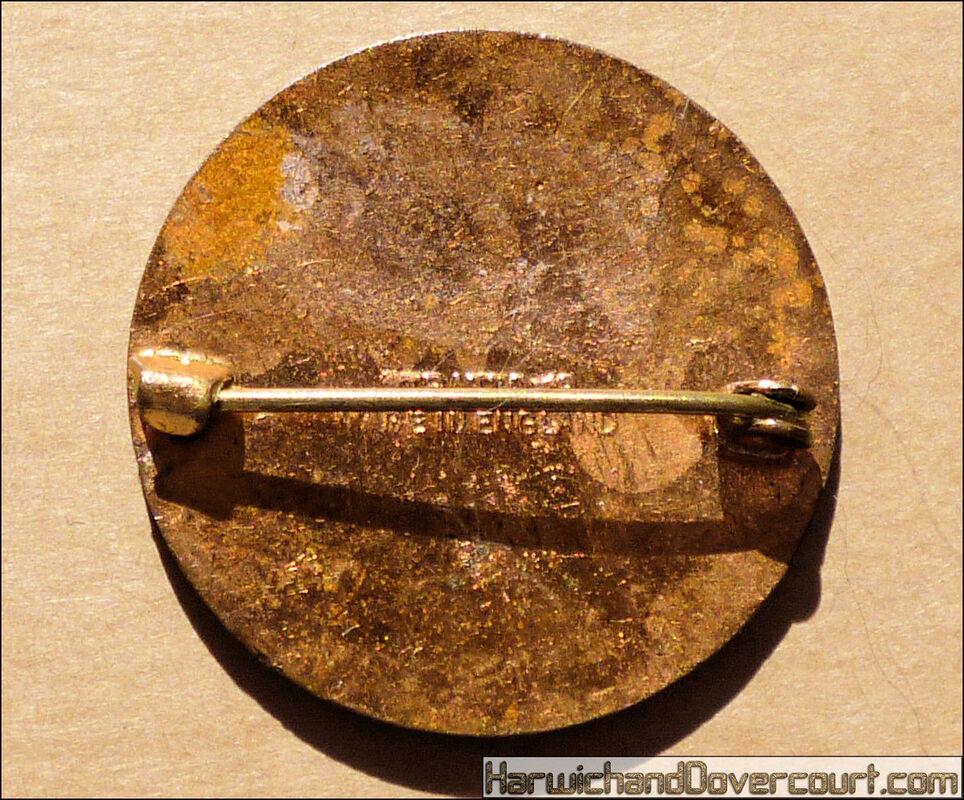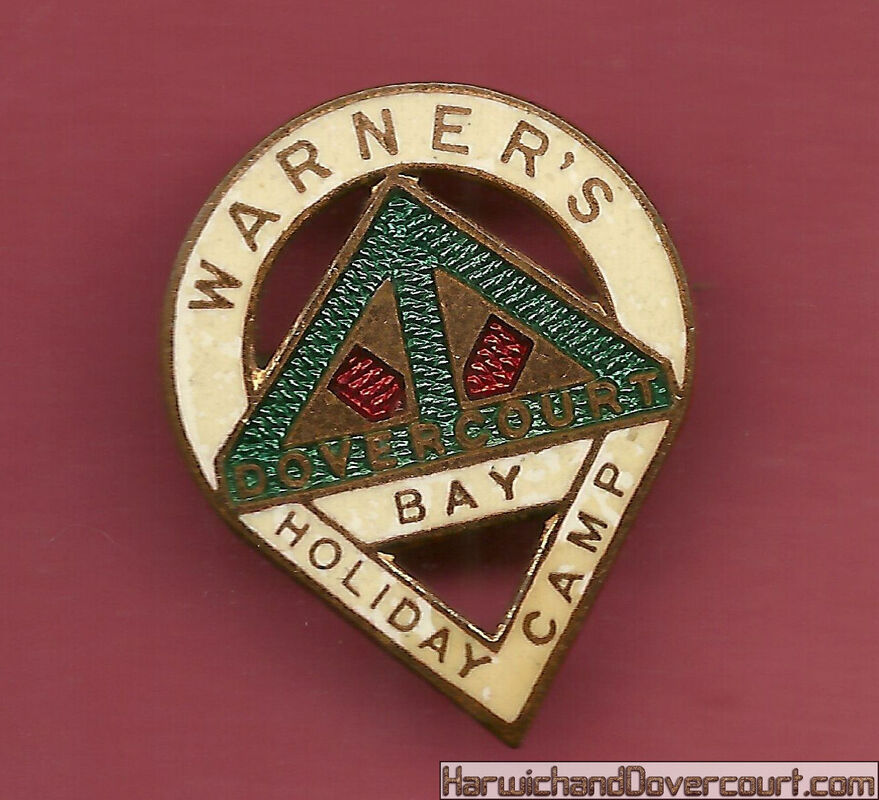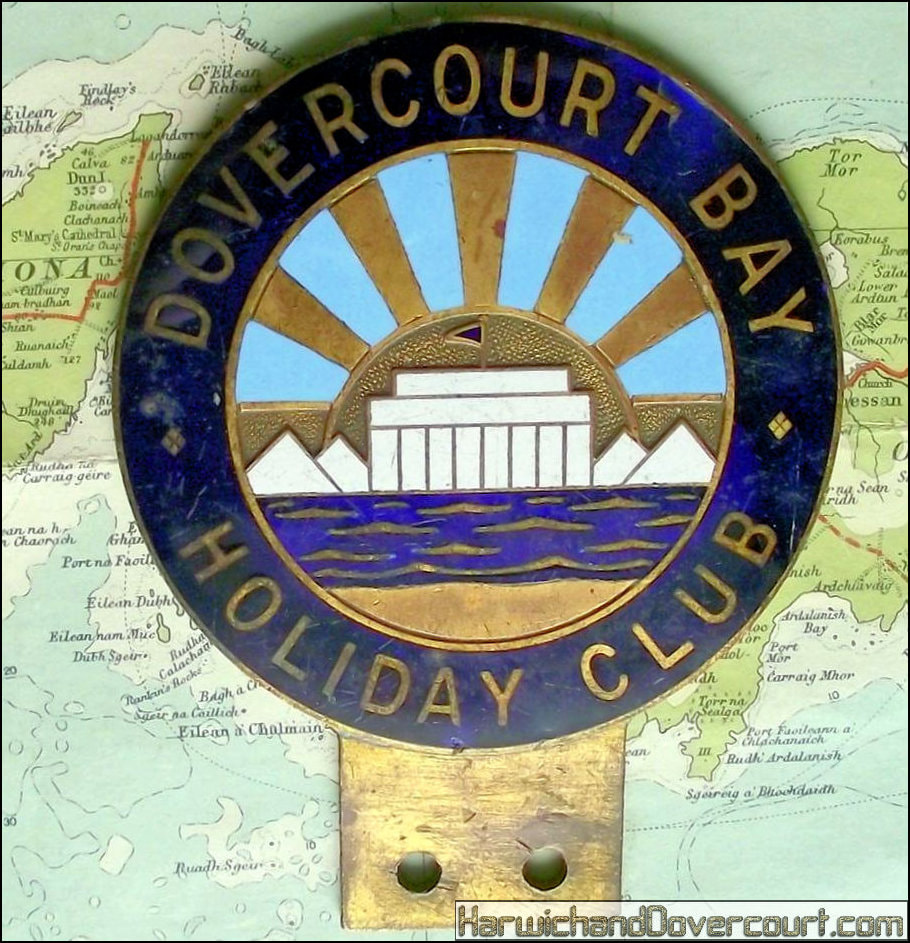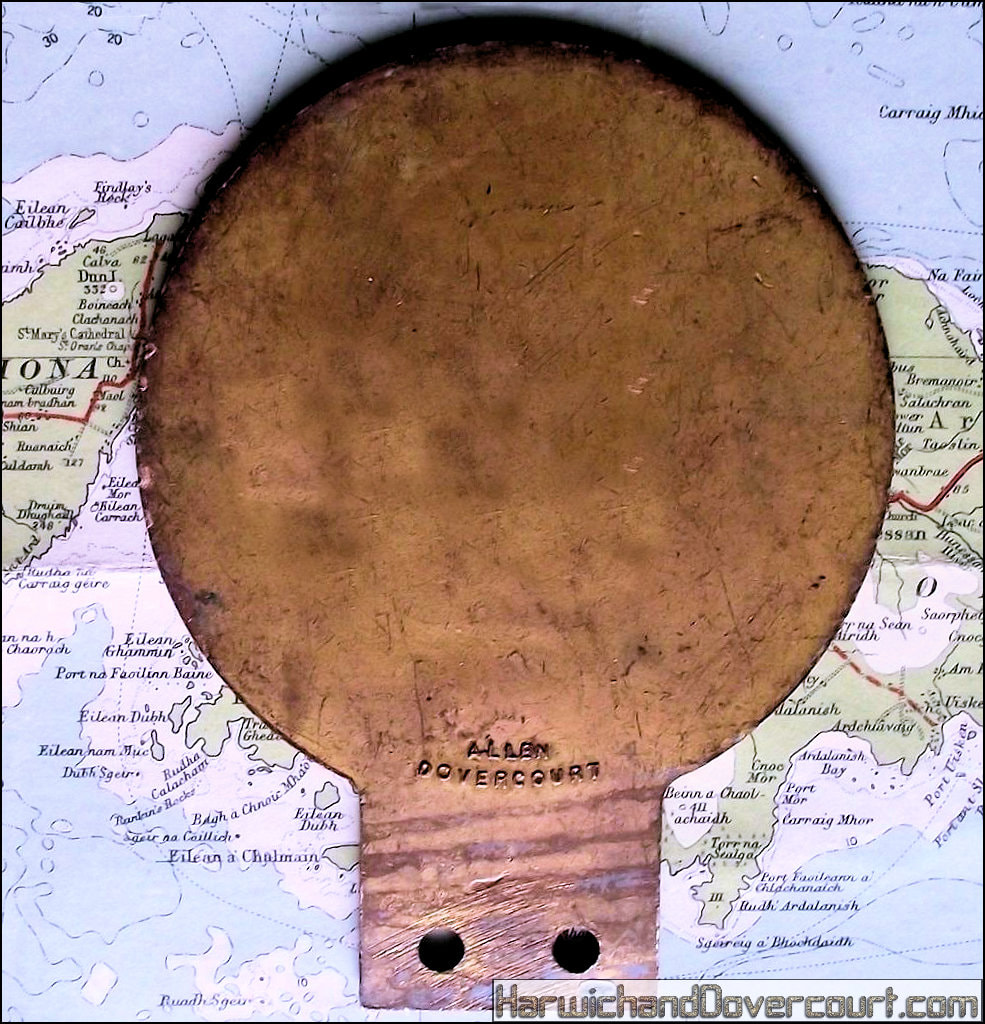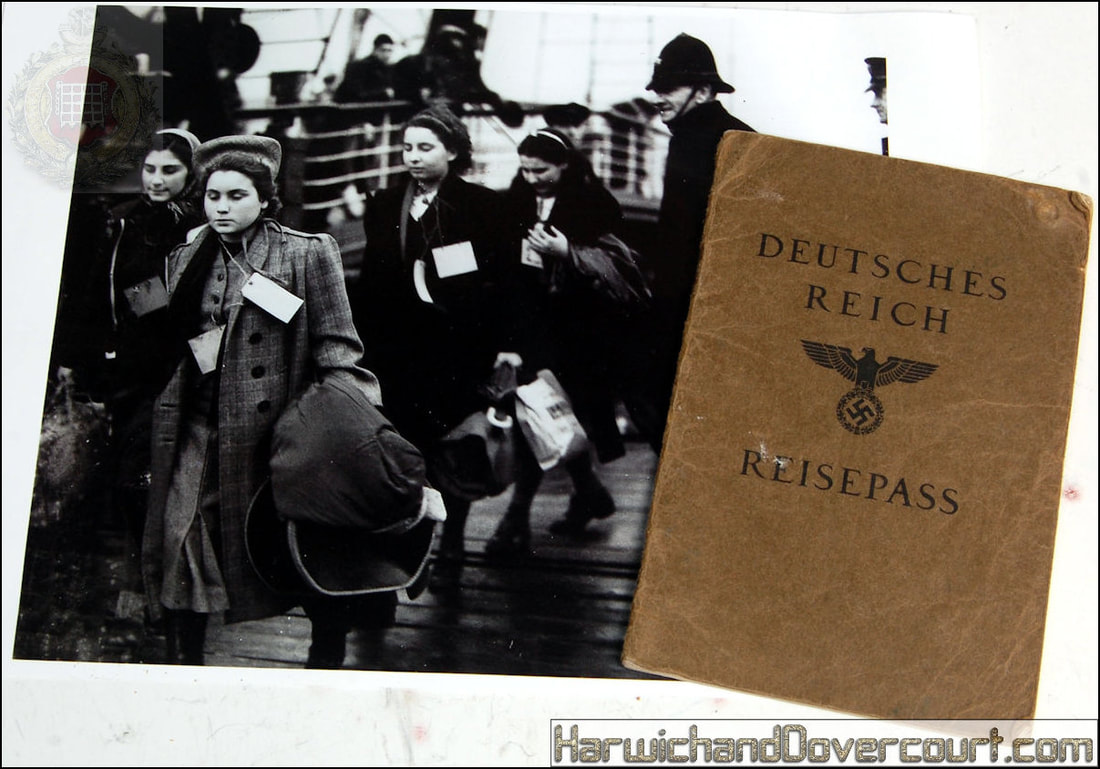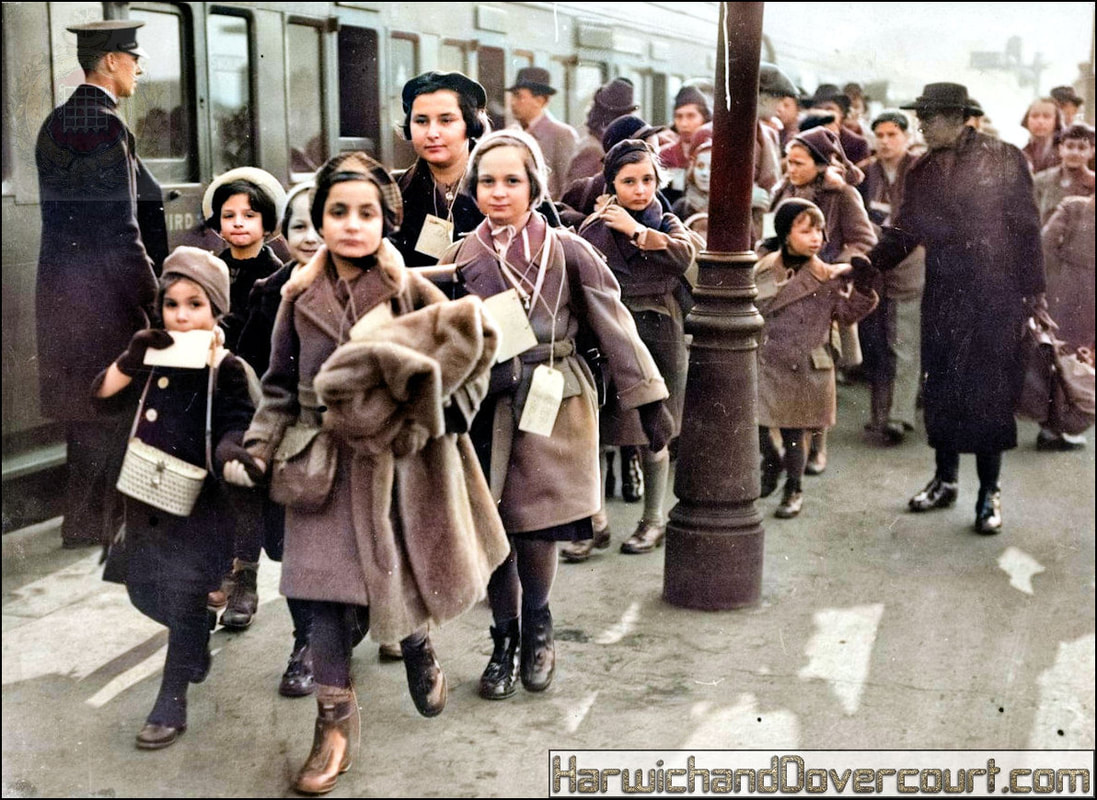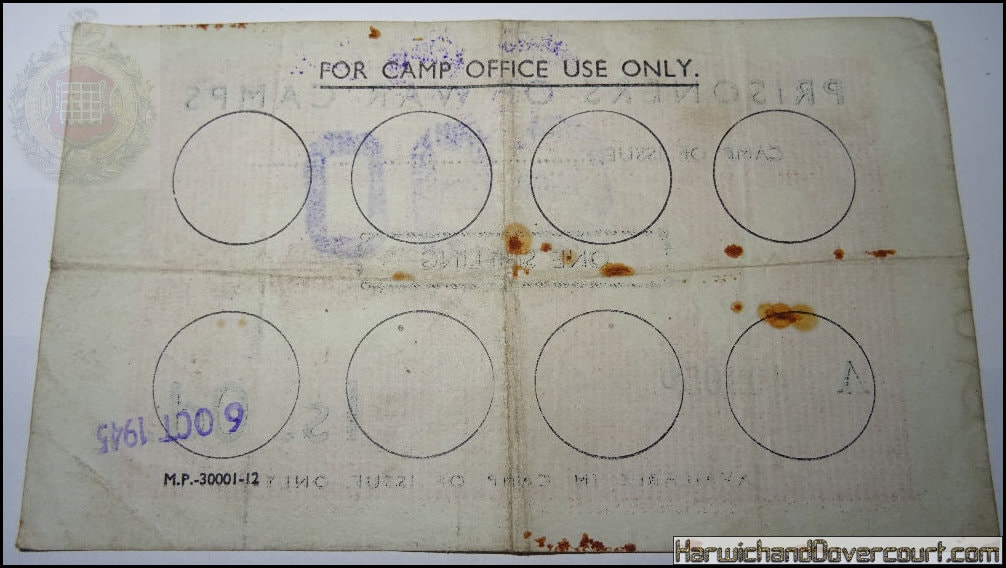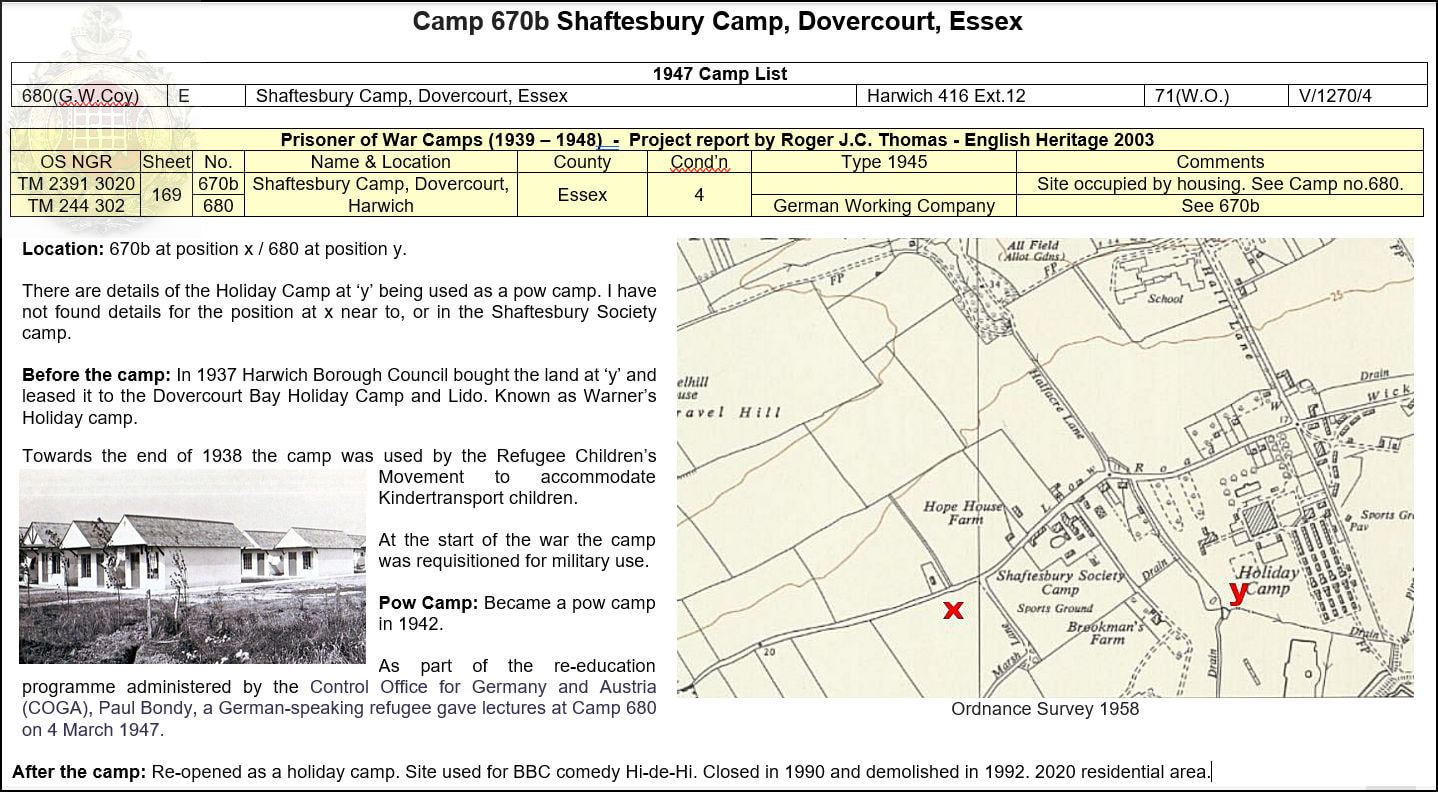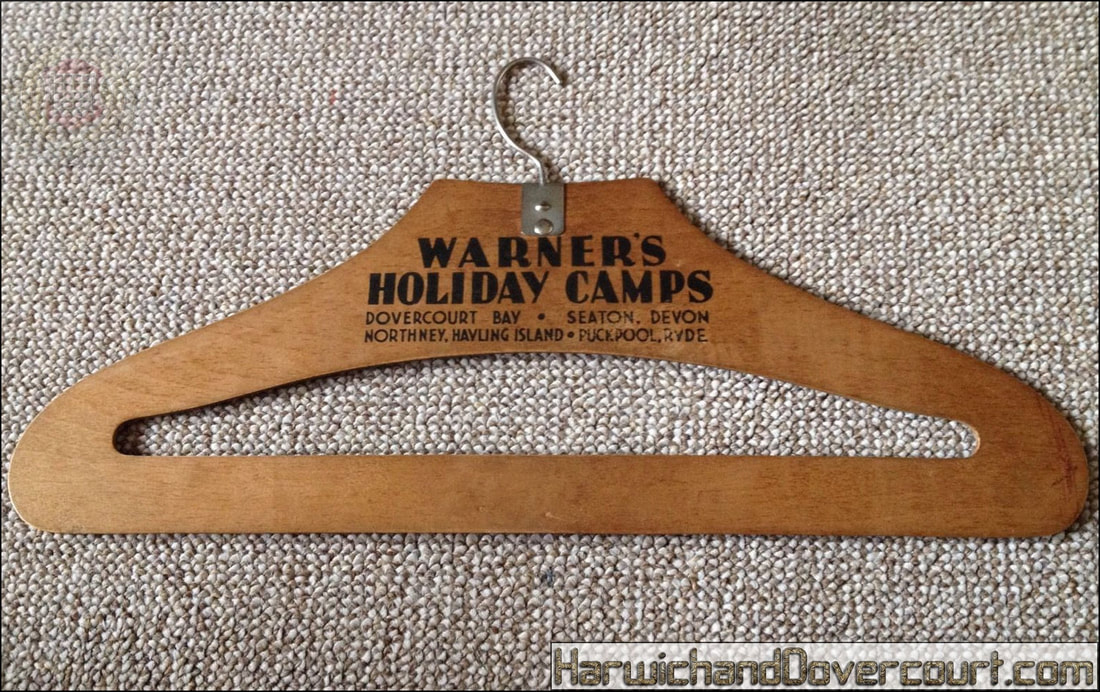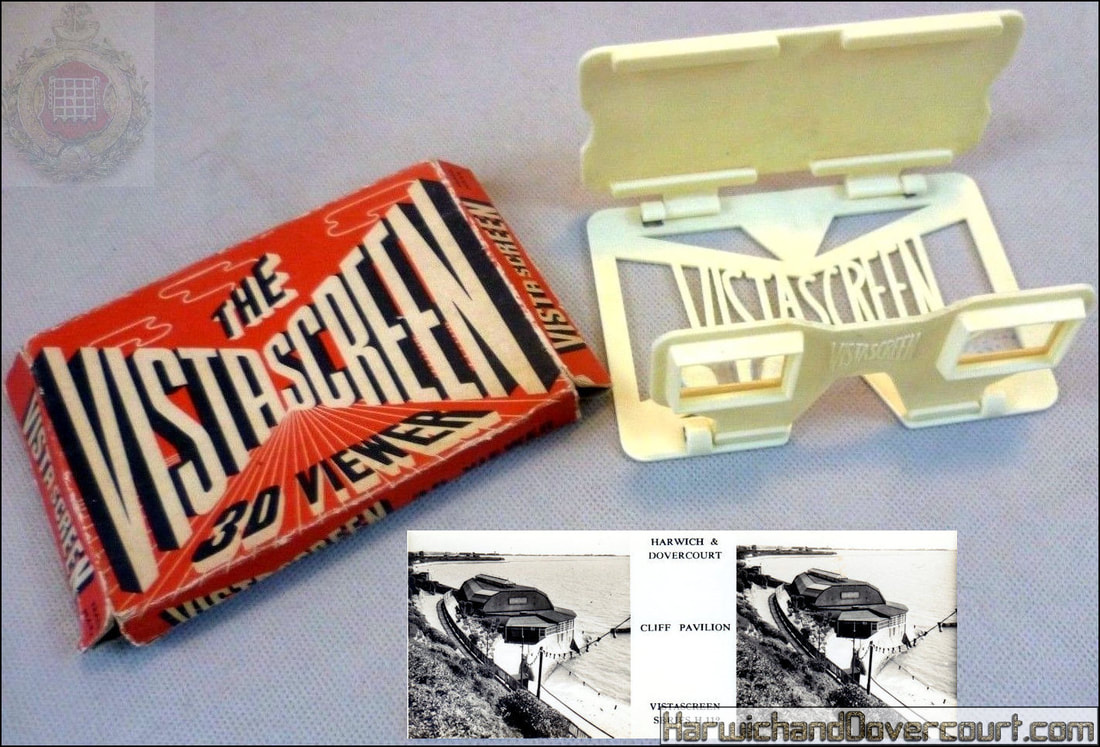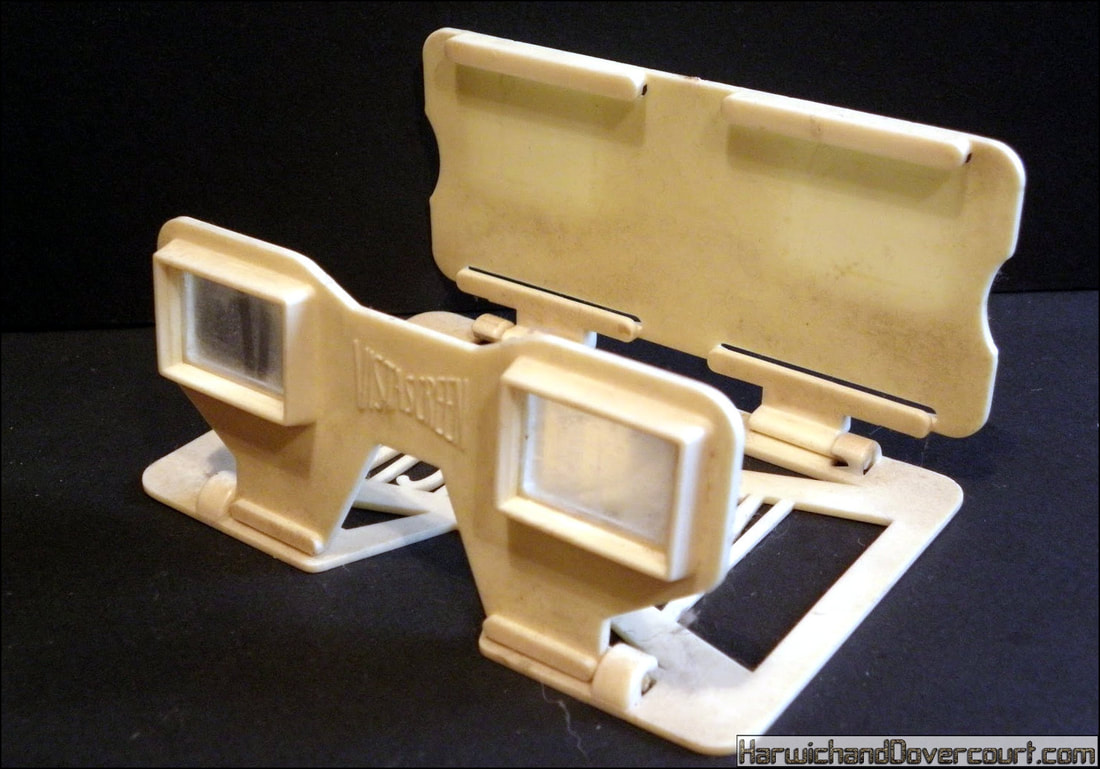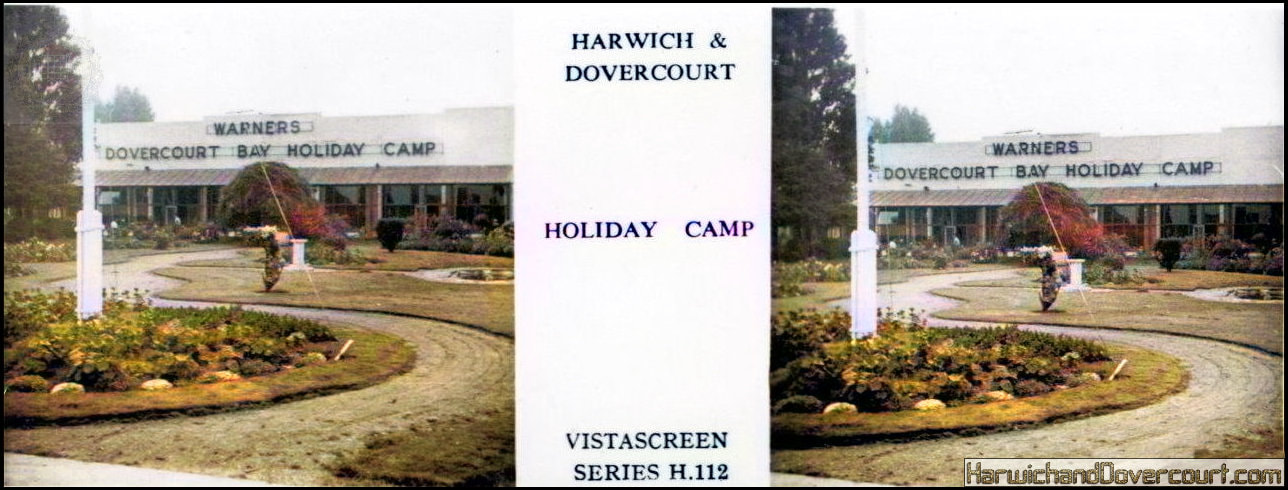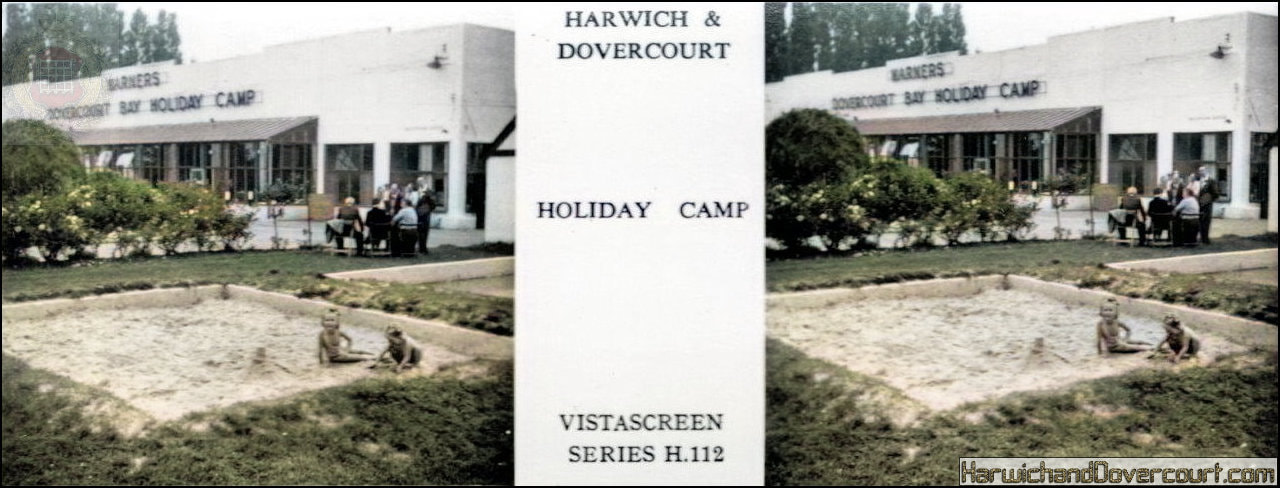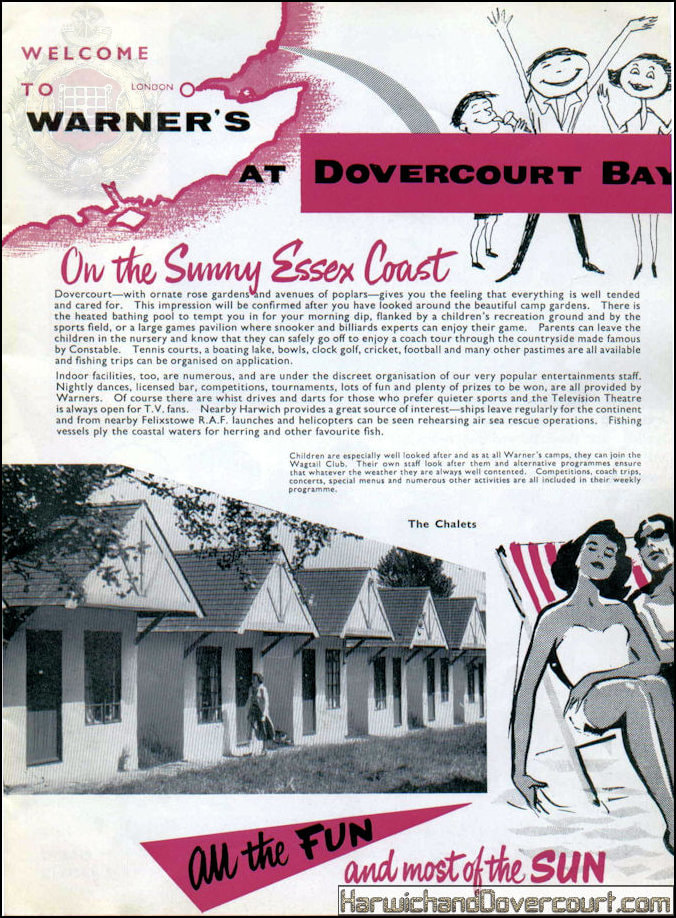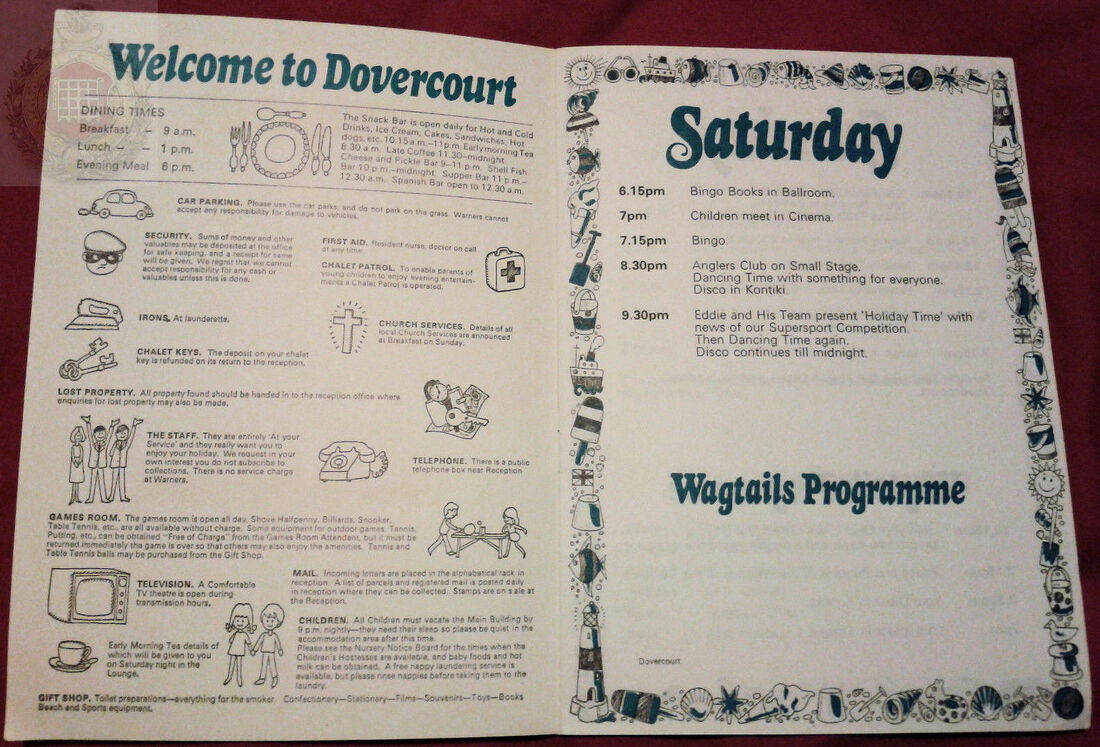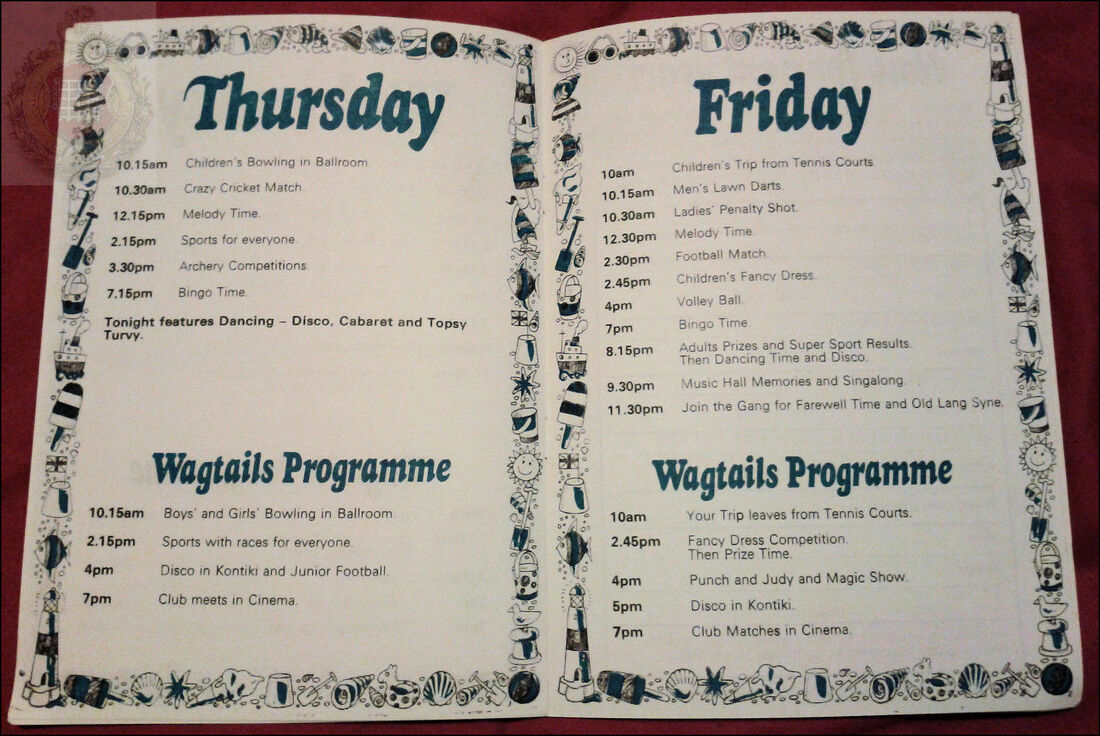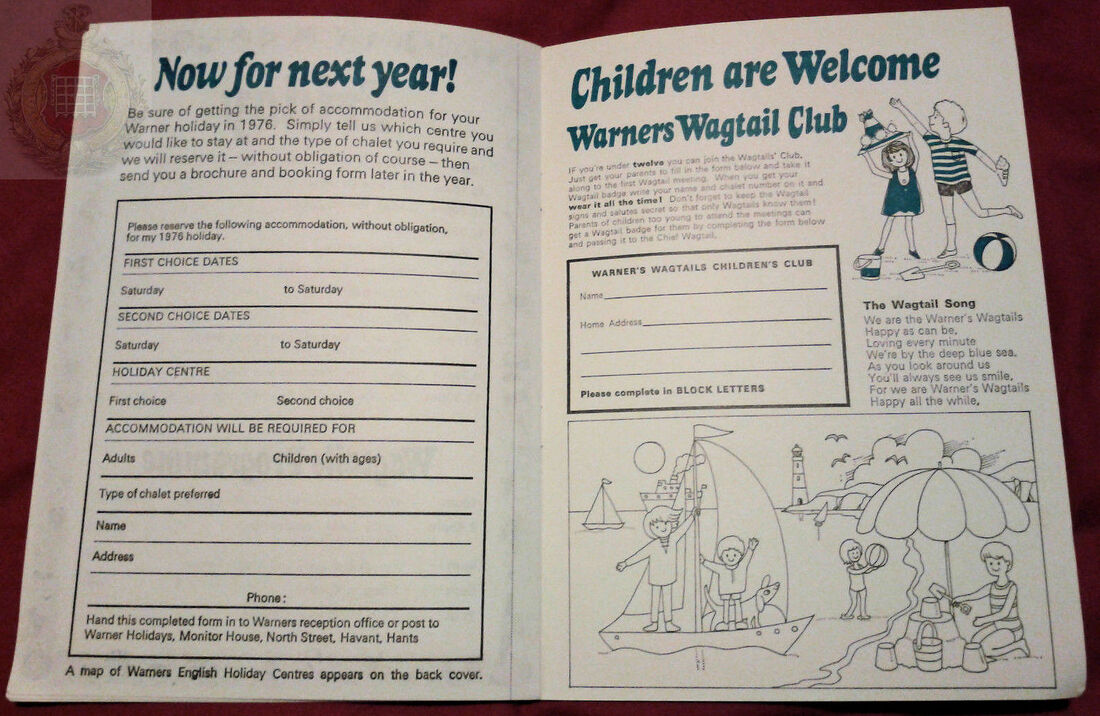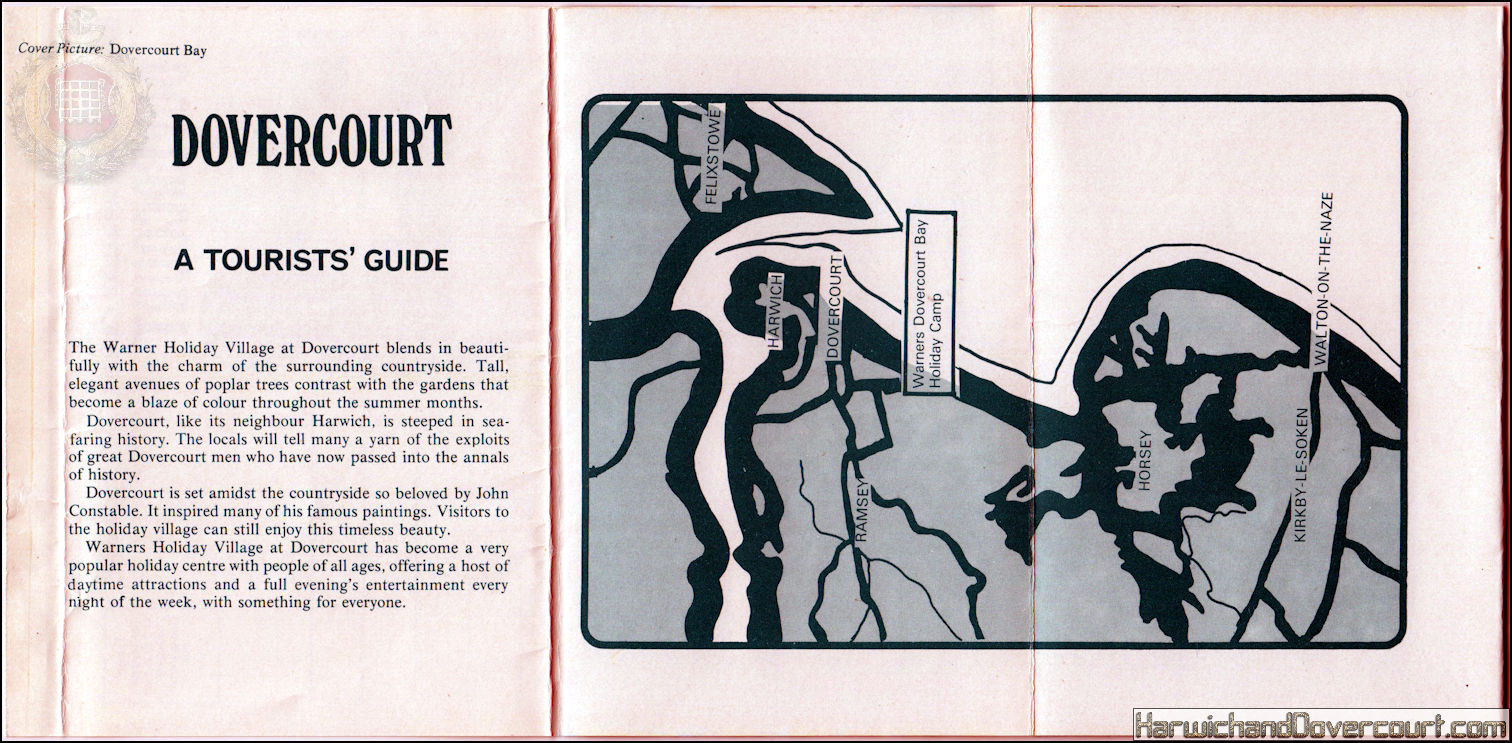~ Memorabilia ~
~ Badges & Pins ~
~ 01 ~ Dovercourt Bay Holiday Camp Badge - Founder 01 (1936) H&D ~
~02~ Dovercourt Bay Holiday Camp Badge - 01 (1936) H&D ~
~ 03 ~ Dovercourt Bay Holiday Camp Badge - 03 (1937) H&D ~
~04 ~ Warner's Holiday Camp Dovercourt Bay (Yellow & Blue) ~
~ 05 ~ Warner's Dovercourt Bay Holiday Camp (Yellow & White) H&D ~
~ 06 ~ Warner's Dovercourt Bay Holiday Camp (Gold) H&D ~
~ Motoring Badges ~
~ 07 ~ Dovercourt Bay Holiday Club ~ Motoring Badge (1937) H&D ~
~ The 1938 - 1939 Kindergaten Project ~
The holiday camp at Dovercourt, run by Warner’s, was hired by the Movement for the Care of Children from Germany as a temporary transit camp for the first groups of Kindertransport children.
The first arrival of 200 children from Berlin and Hamburg docked at Harwich on the 2 December 1938. A larger group of 500 came 10 days later from Vienna but were sent to a camp at Pakefield near Lowestoft until it was evacuated and many of the children were transferred to Dovercourt.
Most of these children were housed in the chalets at the camp as there were no other foster homes as yet available for them. The camp remained opened until the end of March 1939. In that time almost 2,000 of the refugee children had been housed at the camp, some for a week or so, but others, those most difficult to place with foster parents, stayed on for months.
The camp was fitted with a kosher kitchen and the children were given English lessons, taught practical skills and played football. The supervision of the camp came under the care of Anna Essinger, herself a Jewish refugee who had set up a boarding school in Kent.
The holiday camp was not designed for the winter and the chalets had no heating. In the third week of December 1938, the coldest winter of the century moved in to the East of England and many former Kinder remember Dovercourt for its freezing temperatures, inadequate heating and icy water bottles in the beds at night. Local volunteers and those from further afield, did their best to make the boys and girls feel welcome. The local cinema offered free tickets and ice cream for the children ((link to Dolphin Sails formerly the Regent Cinema)) and the vicar of Dovercourt set up a befriending scheme with local children but ensuring that each child was carefully vetted before meeting the German Jewish youngsters.
There was a post office run for a time by Cambridge undergraduate David Hughes. This was a busy hub for the children who eagerly awaiting mail from their parents still stranded in Nazi lands.
Each Sunday the children were put in their best clothes (some donated by Marks and Spencer) and a selection process known by the children as ‘the cattle market’ began. Would-be foster parents visited the camps and indicated which children they would like to take home. Some rudimentary inspections took place. Many children had happy experiences, others did not.
For more information please visit
https://www.ukholocaustmap.org.uk/map
The first arrival of 200 children from Berlin and Hamburg docked at Harwich on the 2 December 1938. A larger group of 500 came 10 days later from Vienna but were sent to a camp at Pakefield near Lowestoft until it was evacuated and many of the children were transferred to Dovercourt.
Most of these children were housed in the chalets at the camp as there were no other foster homes as yet available for them. The camp remained opened until the end of March 1939. In that time almost 2,000 of the refugee children had been housed at the camp, some for a week or so, but others, those most difficult to place with foster parents, stayed on for months.
The camp was fitted with a kosher kitchen and the children were given English lessons, taught practical skills and played football. The supervision of the camp came under the care of Anna Essinger, herself a Jewish refugee who had set up a boarding school in Kent.
The holiday camp was not designed for the winter and the chalets had no heating. In the third week of December 1938, the coldest winter of the century moved in to the East of England and many former Kinder remember Dovercourt for its freezing temperatures, inadequate heating and icy water bottles in the beds at night. Local volunteers and those from further afield, did their best to make the boys and girls feel welcome. The local cinema offered free tickets and ice cream for the children ((link to Dolphin Sails formerly the Regent Cinema)) and the vicar of Dovercourt set up a befriending scheme with local children but ensuring that each child was carefully vetted before meeting the German Jewish youngsters.
There was a post office run for a time by Cambridge undergraduate David Hughes. This was a busy hub for the children who eagerly awaiting mail from their parents still stranded in Nazi lands.
Each Sunday the children were put in their best clothes (some donated by Marks and Spencer) and a selection process known by the children as ‘the cattle market’ began. Would-be foster parents visited the camps and indicated which children they would like to take home. Some rudimentary inspections took place. Many children had happy experiences, others did not.
For more information please visit
https://www.ukholocaustmap.org.uk/map
~ 01 ~ Landing at Harwich with a Deutsches Reich Reisepass (Kindertransport passport) ~
~ Naming Anna Heichler and dated 1938 H&D ~
In the winter of 1938, the camp at Dovercourt was requisitioned by the government for housing children evacuated from Germany by the “Kindertransport” programme. It was also noted that from recollections of the refugees, they also suggest that by December 1938 the camp was being run by Harry Warner, whose company Butlin was on the board at around the same time Butlin's advertised Dovercourt as "associated with Butlin's" and into the early 1940s Butlin was putting on rail packages with the London and North Eastern Railway (LNER) to the Dovercourt camp.
~ 02 ~ Kindertransport 1 1939 H&D ~
~ Boarding the Train at Harwich ~
~ 03 ~ Simple childhood pleasures denied by the Nazi's at Warner's ~ Kindertransport (1939) ~
~ 04 ~ Kindertransport Camp W.R.V.S. Letter (Jan 12th 1939) H&D ~
~ 05 ~ Dovercourt Bay Holiday Park ~ Kindergaten Letter of thanks (March 29th 1939) H&D ~
~ 05 ~ Dovercourt Bay Holiday Park ~ "Prisoner of War Camp Currency (1945-1946) H&D ~
When the Second World War started in September 1939, the camp was requisitioned again to accommodate military personnel and then later in 1942 was requisitioned for a "Prisoners of War" (Number 680) alongside the Shaftesbury Society Camp (670b).
In the official records they appear to be connected marked "X" & "Y" on the map below
670b Shaftesbury Camp, Dovercourt, Harwich Essex Eng Site occupied (now by housing). See Camp no.680
680 Shaftsbury Camp, Dovercourt, Harwich Essex Eng occupied (now by housing) See Camp no.670b
Post WW2 and the allied victory, the camp was in a very poor state and required many repairs and maintenance, to get it back to pre-war condition.
However, on the 1st of June 1946 Warner’s holiday camp reopened for the summer season.
In the official records they appear to be connected marked "X" & "Y" on the map below
670b Shaftesbury Camp, Dovercourt, Harwich Essex Eng Site occupied (now by housing). See Camp no.680
680 Shaftsbury Camp, Dovercourt, Harwich Essex Eng occupied (now by housing) See Camp no.670b
Post WW2 and the allied victory, the camp was in a very poor state and required many repairs and maintenance, to get it back to pre-war condition.
However, on the 1st of June 1946 Warner’s holiday camp reopened for the summer season.
~ Other Bits & Bobs ~
~ A Warner's Holiday Camp Coat Hanger H&D ~
VistaScreen, Weet-bix, & Weetabix 3D ViewersEngland, 1950s & Australia, 1960s
The original standard VistaScreen, the Weetabix VistaScreen, and the Weet-bix Viewascope viewers are all somewhat related. Their folding, plastic designs are similar but they differ in branding, lens shape and the quality of the stereoviews produced for them.
The original VistaScreen had the highest quality stereoviews of the 3 viewers: glossy, black & white images bound into booklets of 10 and individually boxed by subject. Stanley Long and the Spring brothers (Jack & Jeff) started VistaScreen 1956-ish and shot high-quality stereoviews for it. Later, the VistaScreen company was sold to Weetabix which used the product as a promotional viewer, producing lower-quality, color stereoviews that were given away free with their cereal.
The Weet-bix cereal company in Australia (a sister company of Britain’s Weetabix cereal) had their own version of the viewer called the Viewascope. There are also a number of clones, including the TV Week, Lipton Tea, and 3D Picture Viewer.
The original VistaScreen had the highest quality stereoviews of the 3 viewers: glossy, black & white images bound into booklets of 10 and individually boxed by subject. Stanley Long and the Spring brothers (Jack & Jeff) started VistaScreen 1956-ish and shot high-quality stereoviews for it. Later, the VistaScreen company was sold to Weetabix which used the product as a promotional viewer, producing lower-quality, color stereoviews that were given away free with their cereal.
The Weet-bix cereal company in Australia (a sister company of Britain’s Weetabix cereal) had their own version of the viewer called the Viewascope. There are also a number of clones, including the TV Week, Lipton Tea, and 3D Picture Viewer.
~ Original, Standard VistaScreen 3D Viewer - Harwich 112 ~
The original Vistascreen viewer has the name embossed on the front and die-cut on the bottom with the back of the cardholder blank.
The lenses are rectangular and this particular viewer came in a special edition Christmas box with 3 boxes of the 10-view booklets.
The lenses are rectangular and this particular viewer came in a special edition Christmas box with 3 boxes of the 10-view booklets.



